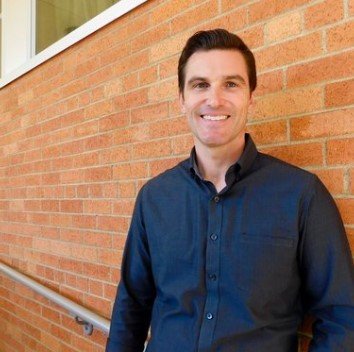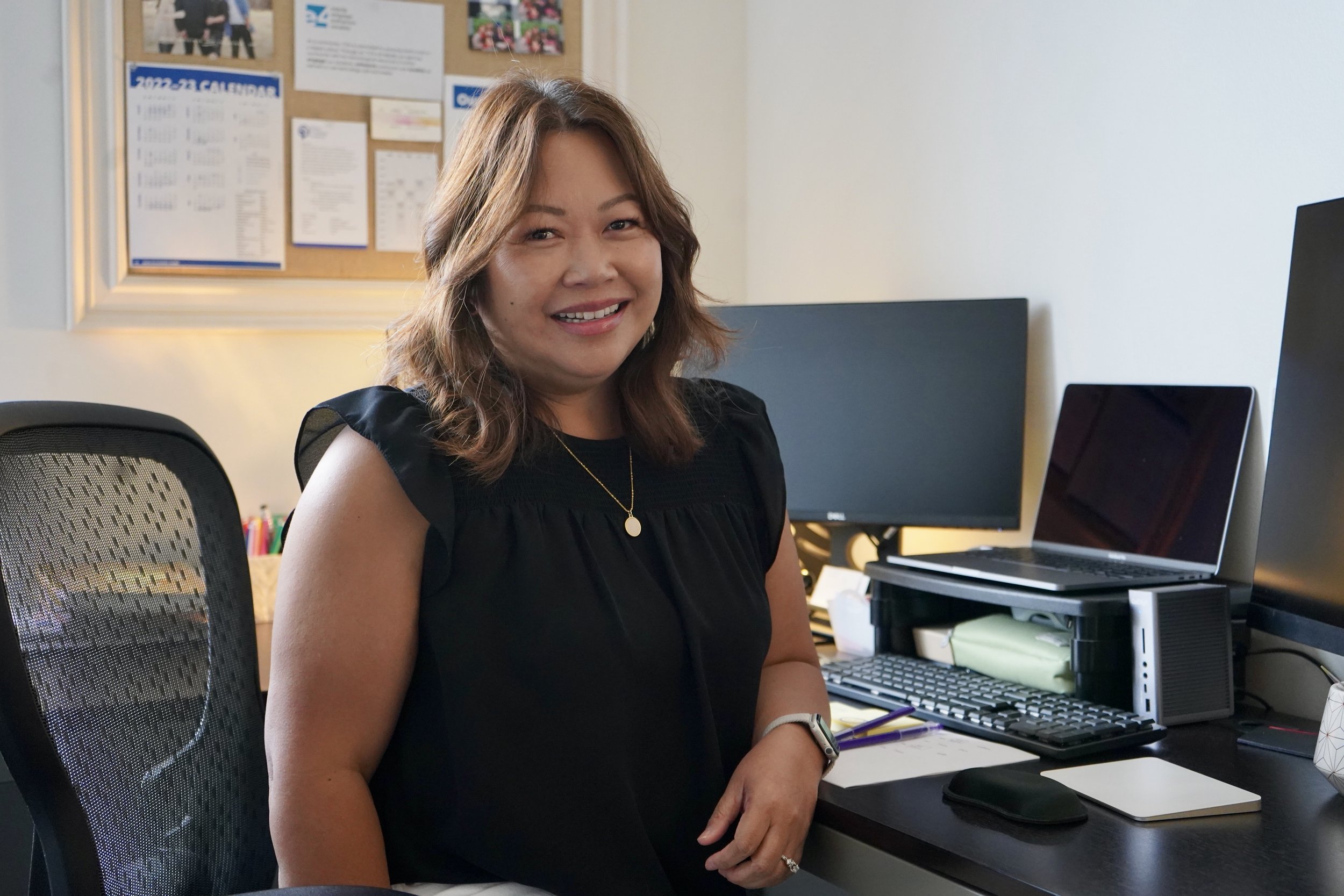Story by Pam Higginbotham. Photos Courtesy of TLC.
Allison Vest dreamed of being a veterinarian as a child, but her path led to an unexpected, yet fulfilling career of designing prosthetics and changing lives. Combining her traditional art training with her love of science, she entered into the field of Anaplastology. Her work will be featured in the upcoming TLC show Body Parts, which will premiere April 6th.
Allison received her undergraduate degree in Art at the University of Illinois at Chicago and then continued into a medical illustration program, known as Biomedical Visualization, for her Master’s degree. It was a small class of about 14 students who eventually became medical illustrators, medical animators, and pharmaceutical animators. From there, Allison and only one other classmate chose to work with prosthetics.

Allison received her undergraduate degree in art at the University of Illinois at Chicago and then continued into a medical illustration program, known as Biomedical Visualization, for her Master’s degree. It was a small class of about 14 students who eventually became medical illustrators, medical animators, and pharmaceutical animators. From there, Allison and only one other classmate chose to work with prosthetics.
Getting her start by drawing medical illustrations for the bowel transplant team, Allison then discovered her love of prosthetics. “I took the introduction class to prosthetics where we had to make noses for each other,” she says. “So, I had to make a nose for a classmate of mine that fit over her nose and she made me one and we learned a little bit about specific facial prosthetics. Even at that point, it just was so much more rewarding than the bowel transplant illustration I had made. Although I loved that, it was the fulfilling part, because it stuck in my heart and when that happens, there’s no going back.”
Allison’s prior training as an artist plays a very important role for when she is creating prosthetics. “I can’t imagine doing my job without a really strong art background,” she says. “I went to an arts magnet school starting in middle school. And I went to the arts magnet high school so really, I was an art student from seventh grade. I graduated high school from a really intense art program and of course, that continued in undergrad and then my master’s degree. It’s just so much about designing and sculpting and coloring and is the foundation to manifest all of it.”
After completing her Masters degree, there were not a lot of jobs available, which Allison feels is still the case today. She explains, “Prosthetics was such a small profession. Six months after graduating, I moved back in with my parents and was just out there contacting people. I only had two job interviews and one of them was in Dallas with Greg Gion, who had been here for literally decades and was looking at hiring someone, so I got that job. I loaded up my U-Haul and moved from Florida to Dallas. She laughs, “I think my parents were very grateful that I moved out of the house.”
After all these years, Allison has never left her original job at Mosaic Prosthetics in McKinney, Texas. “I technically am still there,” she says. “I was an employee, and then we became partners, and then I bought him out of the practice and that’s what I continue to operate today. So, I’ve never quit or I’ve never been fired!”

A typical day for Allison does not involve a heavy schedule of seeing patients. She says, “I don’t see a ton of patients a day because it’s a lot of intense lab work. A typical day for me might be seeing two different patients. If I see three, that’s kind of a busy day. I see a patient and my shortest appointment would be like an hour. My appointments can be three hours long if I’m sculpting on someone, so the amount of time I’m actually one on one with the patient, at least that much time I’m studying in the lab without them having to be there. So, there’s a lot of lab time where I’m not necessarily in front of a patient but I’m doing things on their case.”
Many patients travel from out of town seeking Allison’s expertise. Typically, they can leave with their new prosthesis in about one week. “If I have a patient coming from out of town and I’m making a nose, for example, we typically book them Monday through Friday,” she says. “We’re typically finished up by Friday morning, and they can go on their way. Now, that doesn’t mean they’re here every single day, all those hours, but that they’ll come in maybe an hour or so and then a couple of hours in the afternoon, and then are free to do whatever they want around town. If I was fitting someone we know is from out of town, we start on Monday and they would leave with their prosthesis on Friday.”
Family members can be a very important part of a patient’s prosthetic process and many choose to have family with them for support. The reaction of the family is a very special moment for Allison to experience. She is grateful and says “I love feedback and having another person in the room to give opinions. I appreciate that. It’s what makes your job rewarding, and the family members are sometimes as much a motivating factor as the person themselves. It’s this whole group effort.”
Allison creates a variety of body parts such as eyes, noses, fingers and toes, but the most in demand part she creates are ears. “Ears are the most common for me,” she says. “I think that’s because there are people who are born without ears and also people losing their ears to cancer. Both of those combined put the ears at the top.”
Silicone is the main material used in making a prosthesis. There is a wide variety of silicone available, but Allison prefers to use the same three or four. She then mixes the colors according to the skin tone of the person receiving the prosthesis. “All the silicones start off clear in color and I’m mixing the colors from clear to what I call their color set,” she says. “I’m mixing pigments into yet a different kind of silicone and I’m painting that silicone on the other silicone.” This phase of the process is where her formal art training helps her create the realistic skin tones of the completed prosthesis.
Creating realistic prosthesis parts is very challenging, but the eye comes with unique challenges. Allison states “The most challenging for me is what we would call an orbital prosthesis which is the eye with the eyelids around it. Just the eyeball is called an ocular prosthesis, but when you have the eyeball and the skin around it, that’s called an orbital prosthesis. To me, it’s the most challenging because as you’re moving, as you’re blinking, your eyes are different. If you’re awake versus sleeping. It’s like hitting a moving target.”
One common misconception about prosthetics is that they are permanently attached. Allison explains, “The prosthesis is what we call an external removable device. So, it’s nothing implanted. At the end of the day, it’s removed. And so, I’m always surprised when I get the person that assumes that I surgically placed this on someone. It comes off and they start over the next day and apply it again.” The silicone she uses is compatible with water and the adhesive will last all day once it is applied in the morning. “They are good to go all day until they remove it at night,” she says. Her goal is to make it an easy process for the patient to apply their prosthetic as soon as they get up in the morning, and then remove it at the end of each day.
Referrals make up a big part of the patients that come to Allison’s office. “A lot of my referral base is from local physicians,” she says. “Ear, nose and throat doctors are the biggest ones, oral and maxillofacial surgeons, and some plastic surgeons.” Allison also speaks at continuing education events and provides information on the services of Anaplastologists. “I went to a group of dental hygienists and educated them about what we do and they found it interesting and informative,” Allison says. “I’ve spoken to oculoplastic surgeons and nurses, educating them on what’s possible and what we do.” She continues, “I’ve published with some different doctors when they wanted to publish in journals. It’s about what we do from their perspective, and I supply photos and some literature.”
There are a very small number of certified professional anaplastologists across the country, and they are a tightly knit group that support one another. Allison reciprocates referrals with another Anaplastologist at MD Anderson in Houston. This provides options for a patient if they live closer to a certain area and can save them a lot of travel time. The demand for prosthetics is surprisingly not overwhelming for the small group of professionals to handle. “Thankfully, there aren’t that many people out there losing their nose or losing their ear on a regular basis,” she says.
Currently, Allison is serving as Vice President to an educational group called the International Anaplastology Association. Their group plans a pathology content conference that is held every year. Due to the pandemic, their conferences have been virtual for the last two years but were held in person prior to that. “Our conferences are like getting back with an old family, like a big extended family reunion every year,” she says. “Nice. And they’re small. I mean, for us, they are big meetings, but we’re talking about fewer than 100 people gathered for a conference. But that’s when we get to really talk to other people who do the exact same thing as us and share and relate because it’s such a small group. It’s nice to be able to share those experiences with each other and share your knowledge and excitement of what to do, share cases and successes, and celebrate.”
Allison feels that the TLC series will bring more knowledge and insight into the world of prosthetics as well as let potential patients know there is hope. “It’s not like we have a huge patient pool to begin with,” she says, “but I do feel like this show is probably going to bring out people who didn’t know that we exist and didn’t know that this is an option.”
The three-part series Body Parts, featuring Allison Vest, will premiere on April 6th on the TLC channel. It features several of her patients and documents their amazing journey together.
Featured
Pam is a creative soul who has a passion for telling people’s stories. Spotlighting inspiring people doing good in the world is truly an honor for her. She enjoys spending time with her rescue dog and guinea pig, Rocky and Peppy, and nurtures her love of photography by adding to the 98,112 photos already on her iPhone.
Featured
Josh Taylor was deployed to the Middle East, flying missions into Iraq, Afghanistan, and Syria, when he realized that many of the people he spoke to were divided. It was 2018, and Josh had already been in the Armed Forces for over ten years, but he wanted to find a cause that could unite the nation. “Flying 65,000 miles and spending 300 hours in a machine gives somebody a moment to think,” Josh says. Eventually, he found his answer– our youth, and alongside them, our educators– have the strength to be the foundation for our country.
When Lisa Wong launched the STEM program at Trinity Christian Academy, her goal and passion was to teach the kids that they can use STEM fields to bless others in the world around them. She views her time as an investment in the future.





